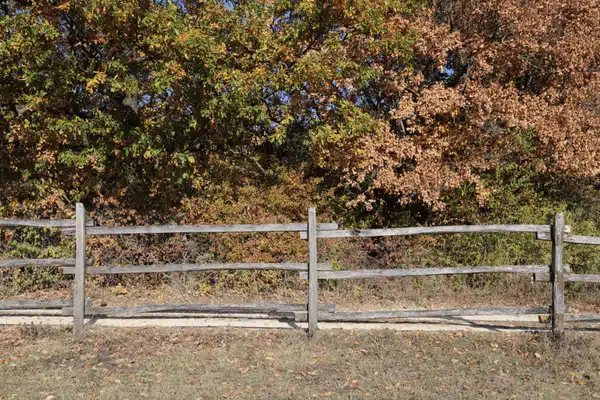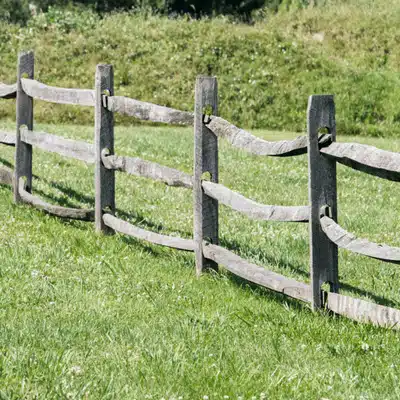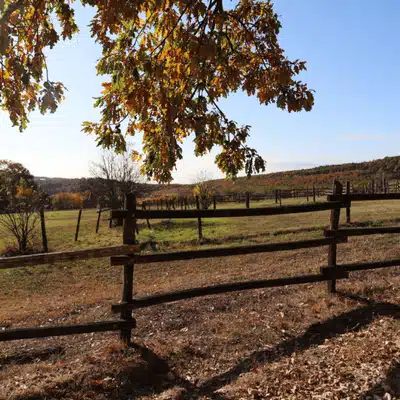
Have you looked at your Robinson, TX property lately? Is your fence buried under thick brush and vines? You're not alone. Many homeowners face this problem every year.
Overgrowth along your fence isn't just ugly. It can damage your fence and invite pests onto your land. Fence line clearing removes brush, trees, and debris along your perimeter. This keeps your boundaries clear and your fence working right.
In 2025, this work remains vital for maintenance. You need it for safety, security, and keeping your land healthy. An overgrown fence line creates many problems. It can cause structural damage and bring more pests to your yard.
Clearing your fence perimeter offers real fence line benefits aside from aesthetics. Here's why you should tackle this important property maintenance task.

Vines, roots, and branches push hard against your fence. This pressure bends posts and breaks wires. Heavy vegetation traps water against wood or metal. This causes rot and rust that costs real money to fix. When you remove vegetation from the fence line, you protect the structure. Your fence lasts longer and looks better.
A clear fence line removes hiding spots for intruders and animals. This improves your property's security and visibility across your land. Thick overgrowth becomes a risk. Heavy branches damage fences and create openings into your yard. When your perimeter stays open, you spot problems fast. You can also keep unwanted visitors away.
Dry brush and weeds act as fuel during Texas summers. This vegetation can spread wildfires quickly. Clearing creates a firebreak that reduces danger and supports fire prevention. It also gives emergency services better access to your land if needed. In areas where fires happen often, removing overgrowth from fence lines protects your home.
Thick brush shelters rodents, snakes, and bugs. These pests eventually move into your yard or house. Heavy vegetation also hides plants that choke out native species. Keeping fence lines clear removes these pest homes. It helps control unwanted plants like poison ivy. This leads to a healthier ecosystem on your property and supports biodiversity in your local ecosystem.
When brush takes over, your actual property line disappears. A clear fence marks your property boundary for everyone to see. This prevents fights with neighbors about boundaries. Hidden, overgrown fences have caused legal battles. A neat fence line makes your land limits obvious. This matters for appraisals and resale value. Clear property lines also improve your property's aesthetics and curb appeal.
Clearing brush makes fence inspections simple. You can spot damage and do repairs without fighting through thorns. Better maintenance access means you can walk or drive equipment along the fence. An open corridor lets you or your crew reach every section. This makes routine work much faster.
If you plan to put in a new fence, clearing is essential preparation work. You need a clean path for the project. Services remove brush, stumps, old wire, and trash. This creates a clear corridor for new posts and panels during fence installation. Clearing and grading the soil gives you level ground. Your new fence goes up right without junk in the way.
Some areas require landowners to clear weeds along shared fences. This stops them from spreading to your neighbor's land. Even without laws, keeping your fence tidy shows respect. It might also be required by your homeowners association. Clearing keeps you in line with regulations about vegetation upkeep and local rules about property aesthetics.

You have several methods to tackle thick brush along your fence. The right approach depends on your project requirements. Consider fence length, brush thickness, terrain, and whether you need careful tree removal around certain plants.
This method uses hand tools like pruners, loppers, or a chainsaw for big branches. Manual work with brush cutters or hedge trimmers works well for small areas. It gives you control when working near an existing fence or trees you want to keep. It doesn't disturb the land much. But it takes time and energy on long fence lines. Always wear the right gear when cutting heavy brush.
For fast results on heavy growth, mechanical methods use big equipment. This includes brush mowers, tractor attachments, or forestry mulchers. These machines cut through brush and saplings quickly. They even grind small stumps. This works great when you're preparing for new fence work or reclaiming old fence rows.
Skilled operators must run these tools. Poor use can damage your fence or cause soil erosion. Good crews adapt their techniques to your land and use controls to prevent erosion problems. One popular technique now is forestry mulching. It grinds brush into mulch right on the spot. This avoids hauling trash and leaves mulch that stops regrowth.
Herbicides offer another way to clear and maintain fence lines. These products kill weeds and brush well for brush control. You might cut vegetation first, then treat areas with herbicides to stop new growth. For best results, apply these during growing season when plants absorb them.
If you want natural options, organic products exist. Always follow label directions. Check regulations about chemicals near water or in neighborhoods. Professional landscaping experts follow environmental rules to protect water and habitat areas.
Good fence clearing includes complete brush removal and cleanup. Cutting vegetation is just step one in the clearing process. You must remove what you cut through debris removal work. This means gathering branches and wood for disposal. Sometimes you can chop rubbish into mulch or burn it where regulations allow. Otherwise, bring it to a facility.
This work is handled by professional land clearing services. Crews gather brush, timber, and old fence wire. They separate metal for recycling while also chipping organic trash for subsequent use. Proper management maintains your land clean and follows the waste standards. It also prevents attracting pests or creating fire fuel later.
Essential Maintenance Practices
.
Here are the best ways to maintain clear fence lines year round.
Make fence clearing part of your routine. Schedule it at least twice yearly to control new growth. In central Texas, plants grow fast. A spring trim and winter cleanup prevent small problems from getting big. Staying ahead of brush saves time and costs. Routine trimming reduces expenses compared to emergency cleanups or fence repairs.
A simple vegetation management plan helps you stay on track. Mark your calendar for seasonal checks. Work with services to treat the area when needed. Your plan might include mowing light growth or applying products to stubborn weeds. Pull saplings before their systems take hold. Regular attention preserves clean aesthetics and stops small sprouts from becoming thick jungle. Good planning improves the overall look of your property.
Always wear gloves, eye protection, and long sleeves when clearing. Use hearing protection with loud power tools. Watch for buried junk, thorny plants, or snakes in thick brush. If you share a fence with neighbors, talk to them about the work. Some areas have a legal timeline for neighbors to clear their side after notice. Try not to clear during bird nesting season.
Use care with gear and chemicals near water. The goal is removing unwanted plants while protecting the surrounding wildlife. Methods like mulching or saving good trees outside the fence help maintain nature on your land. When unsure, ask professionals who know local environmental rules.

You don't have to do this work alone. Many services offer both one-time clearing and ongoing plans. Homeowners often start small, then realize the job is harder than expected. Bringing in experts with the right equipment and know-how makes sense. A pro crew can clear in one day what takes you weeks. Professional services handle debris correctly. They work without damaging your property.
Brush removal protects your land and keeps it clean. It shields your fence from damage, cuts fire risk, and preserves clear lines. When done right, it supports the local environment too. For Robinson, TX landowners, dealing with growth along fence lines means enjoying your property without worry. Regular brush removal and landscape maintenance keep your land looking its best.
Ready to reclaim your fence line? Contact Shilling Excavation today for expert services. We bring heavy equipment, skilled operators, and local expertise to every job. From brush removal to stump clearing and haul-off, we handle it all. Get your neat, secure area back without the hassle. Call now and enjoy the peace of mind that comes with a well-maintained property!
What does fence line clearing cost?
Costs vary based on fence length, vegetation thickness, and access to your land. Manual clearing on small areas requires less money than mechanical work on dense brush. Most providers give free estimates after seeing your property. Getting quotes from multiple companies helps you compare prices and find the best value for your timeline and budget.
How often should I clear my fence line?
Most experts suggest clearing at least twice per year. In Texas, spring and fall or winter work well. Areas with fast plant growth may need more frequent attention. Regular work stops small problems from becoming big issues that require more money to fix later.
Can I use herbicides near my fence safely?
Yes, when used correctly. Apply products during growing season for best absorption. Follow all label instructions carefully. Check local rules about chemical use near water or in neighborhoods. Professional providers know which products work best and how to apply them without harming animals or water sources.
What equipment do I need for fence line clearing?
For small jobs, hand tools like loppers, pruners, and cutters work fine. Larger projects need mechanical gear like forestry mulchers or tractor mowers. Heavy machines require training to operate without risk. If your project involves thick brush, multiple old stumps, or long fence lines, hiring professionals with proper machinery saves time and reduces injury chances.